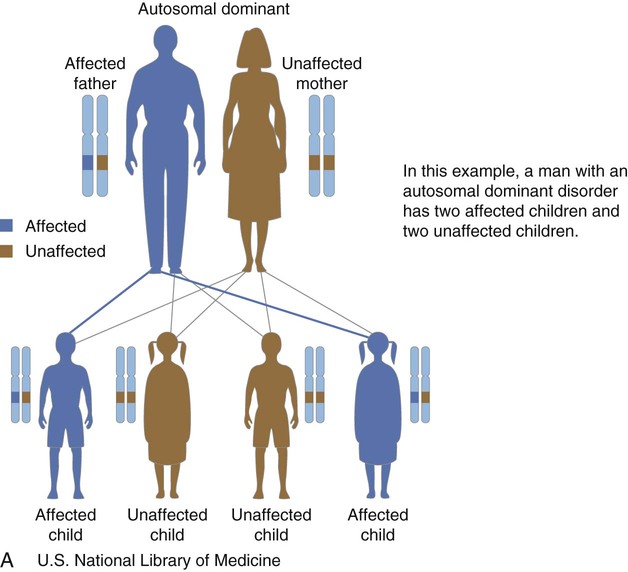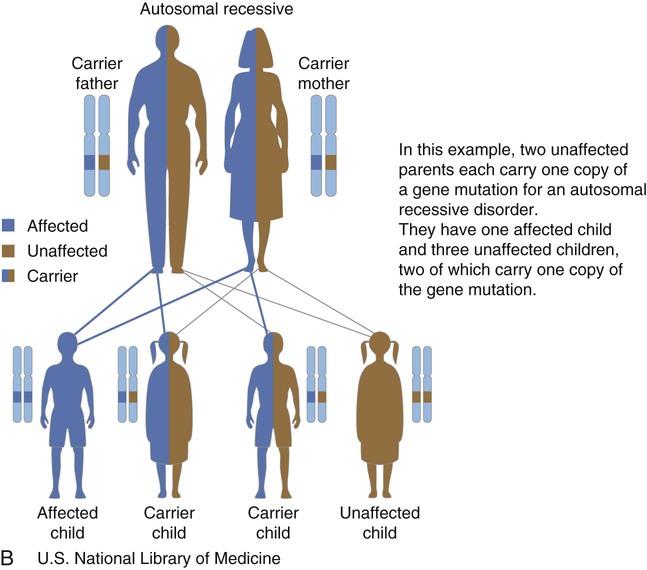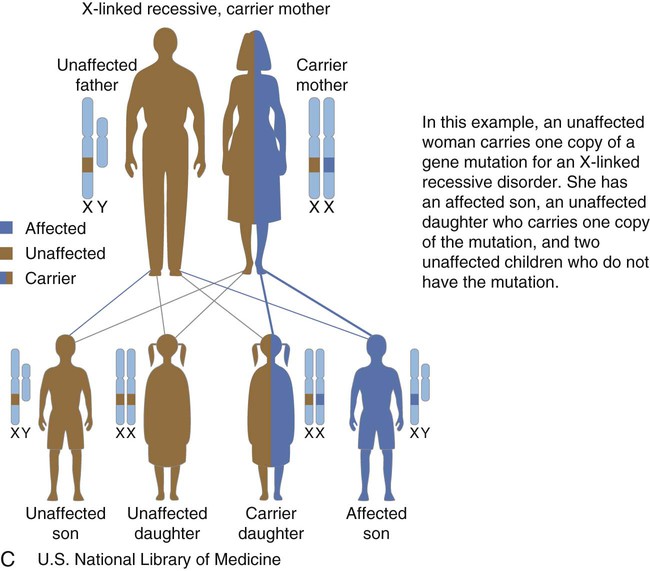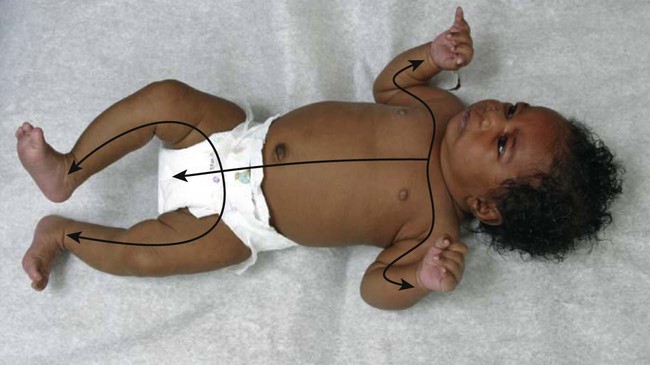1. Define the vocabulary terms listed 2. List the stages of development from the newborn period to adolescence 3. Describe characteristics of growth and development 5. List six factors that influence growth and development 6. Show an understanding of the influence of the family on the developing child 7. Identify four growth and development theorists 8. Describe the predictable physical changes that take place in normal growth and development 9. Explain why nurses must have an understanding of growth and development The concept of genes as dominant or recessive is important in the study of birth defects because some parents who carry defective genes can have healthy children or children who are carriers but are not affected themselves. This concept also explains how outwardly normal parents can give birth to a baby with a defect (Figure 4-1). An individual’s particular set of genes is known as a genotype. Researchers have localized many genes to specific chromosomes, which is termed gene mapping. The availability of these techniques makes an accurate family health history more vital than ever. The remaining pair of chromosomes are sex chromosomes. These differ in males and females, determining gender and secondary sexual characteristics. Defects in sex chromosomes are more prevalent than those in autosomes and account for a greater variety of abnormal conditions. The Y chromosome is small and apparently carries only the genes for masculinity. The X chromosome is much larger and carries the female genes plus many traits essential to life, such as those that direct various aspects of metabolism, blood formation, color blindness, and defense against bacteria. When the genes that cause a specific condition are known to be carried on the sex chromosomes, the disorder is sex-linked (Box 4-1). Directional patterns are fundamental to the growth of all humans. Cephalocaudal development proceeds from head to toe (Figure 4-2). The infant is able to raise the head before he or she can sit and gains control of the trunk before walking. The second pattern is proximodistal development, or inner to outer. Development proceeds from the center of the body to the periphery. These patterns occur bilaterally. Development also proceeds from the general to the specific. The infant grasps with the hands before pinching with the fingers.
Growing Children and Their Families
Heredity and the Developing Child
![]() http://evolve.elsevier.com/Price/pediatric/
http://evolve.elsevier.com/Price/pediatric/



Karyotype
Growth and Development
Characteristics of Growth and Development
Directional Patterns
![]()
Stay updated, free articles. Join our Telegram channel

Full access? Get Clinical Tree


Growing Children and Their Families
Get Clinical Tree app for offline access

